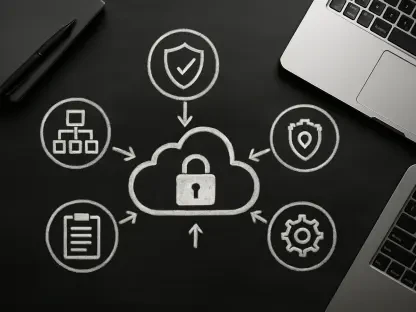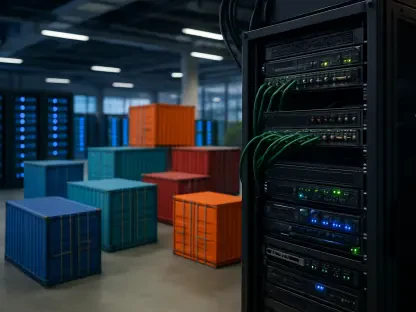In today’s rapidly evolving digital landscape, Matilda Bailey stands out as a leading expert in networking, particularly in the realms of cellular and wireless technologies. Her insights into emerging trends such as SASE (Secure Access Service Edge) architecture provide a window into how enterprises are reshaping their networks to adapt to new challenges, including security threats driven by advanced AI technologies. In this interview, Matilda shares her knowledge on why enterprises are gravitating towards SASE, the factors affecting its market growth, and what the future may hold for this innovative cloud-based approach.
Can you explain what SASE architecture is and why it has gained popularity among enterprises?
SASE is essentially a cloud architecture that merges networking and security functionalities into a single cloud service, streamlining processes for enhanced security and simplified management. The growing interest hinges on its ability to provide seamless, scalable solutions for connecting remote offices, work-from-home setups, and mobile personnel without dependency on geographical location. The popularity stems from its unified management console that consolidates various tools, optimizing both time and resources for enterprises.
How did the economic uncertainties of the past two years affect enterprises’ spending on SASE technology?
Economic uncertainty brought about a prudent approach among enterprises when investing in new technologies, including SASE. Many companies exercised caution with their budgets, resulting in slowed progression and adoption rates for SASE systems during this period. Concerns over macroeconomic changes also heightened scrutiny regarding expenditures, delaying widespread implementation despite acknowledged benefits.
What role does SASE play in enhancing security and networking for remote offices and mobile workers?
SASE drastically improves connectivity and security for dispersed teams by enabling secure, seamless access to corporate networks irrespective of user location. It incorporates various network security functions like firewalls, secure web gateways, and zero-trust network access, ensuring fortified organizational defenses against cyber threats, especially vital for mobile workers who face complex and varied digital risks.
Why did the SASE market experience stagnation in 2023 and 2024? What were the factors contributing to this slowdown? How did supply chain normalizations impact the market during this period?
The stagnation was attributed to multiple factors. A correction in hardware markets coincided with enterprises closely monitoring expenditure, culminating in diminished new orders. Additionally, while supply chains stabilized and inventories surged, this surplus did not translate to immediate increased demand. These elements together dampened market momentum during this time frame.
What changes have occurred in 2025 that led enterprises to start spending more on SASE?
The resurgence in spending is linked to enterprises shifting back into growth mode, realizing the need for integrated security and networking as remote and hybrid work models solidified. Enterprises increasingly consolidated their tech stacks around single-vendor solutions, resulting in simplified purchasing experiences and reduced operating costs. The push for modernization of network infrastructure, particularly through next-generation SD-WAN, has also spurred reinvigorated interest.
Why do enterprises prefer single-vendor SASE systems over multivendor approaches?
Single-vendor environments streamline management and alleviate integration challenges by offering an all-in-one solution for networking and security needs. This simplification translates into easier policy enforcement, cost reductions, and a more cohesive technological ecosystem, which proves significantly alluring to enterprises seeking efficient operations.
What are the advantages of integrating next-generation SD-WAN with cloud-security platforms?
Integrating next-generation SD-WAN with cloud-security opens expansive opportunities for optimizing network performance while enhancing security measures. Enterprises benefit from robust, adaptable connectivity that ensures reliable, high-speed access, coupled with comprehensive protection strategies which are pivotal for safeguarding sensitive data and operations.
Can you discuss the role of advanced AI services in accelerating SSE adoption?
Advanced AI services play a critical role in fortifying security measures by enhancing threat detection capabilities and boosting overall network performance. They allow enterprises to anticipate and quickly respond to complex cyber threats and anomalies, thereby speeding up the adoption of Security Service Edge (SSE) solutions as they seek proactive defense strategies.
What specific network security functions are included in SASE architecture?
SASE architecture comprises several key security functions, including Firewall as a Service, Secure Web Gateways, Cloud Access Security Brokers, and Zero-Trust Network Access. These elements collectively ensure a robust protective shield against digital threats, facilitating secure cloud-based connectivity and safeguarding network integrity.
According to the Dell’Oro Group research, what trends are emerging in terms of hardware versus as-a-service models?
Dell’Oro Group’s findings highlight a definitive shift from traditional hardware-centric models towards as-a-service offerings. This trend reflects enterprises’ growing preference for operational expenditure models over capital expenditure, facilitating sustained investment in flexible, scalable solutions with reduced upfront costs.
How is the SASE market evolving beyond just branch and remote user connectivity?
The evolution sees a broader application of SASE principles across diverse enterprise environments, extending into data centers, campuses, and cloud ecosystems for comprehensive user and device coverage. This universal application marks a transformative step in achieving holistic security and networking across all facets of an organization’s digital landscape.
What opportunities are there for service providers in the SASE space, specifically regarding managed services?
Service providers can leverage their existing network infrastructures to offer managed SASE services, enhancing their consumer business models. Managed services represent a promising avenue, providing scalable and adaptable solutions that cater to diverse organizational needs, supporting seamless integration across various environments.
Can you provide some examples of SASE vendor products designed for telcos and managed service providers?
SASE vendors, such as Cato Networks, offer platforms that are particularly designed for deployment over existing telco and MSP infrastructures, providing tailored solutions that maximize existing capabilities. These products facilitate seamless integration and operational efficiency, catering specifically to the complexities faced by telcos and MSPs in delivering advanced network and security services.
What challenges do enterprises face when transitioning to SASE architecture?
Transitioning to SASE involves navigating challenges such as ensuring compatibility with existing systems, managing integration costs, and training staff on new technologies. Enterprises must also address potential resistance to change and prioritize strategic planning to achieve smooth transitions while maintaining operational continuity.
Looking forward, what future developments do you anticipate in the SASE market?
I foresee continued growth and evolution of SASE architectures as they expand beyond their current domains. Innovations will likely focus on enhancing AI capabilities and developing even more robust security mechanisms to counteract emergent threats. Increased customization options for enterprises, coupled with simplified deployments, will further accelerate adoption as the market evolves to meet dynamic demands.









